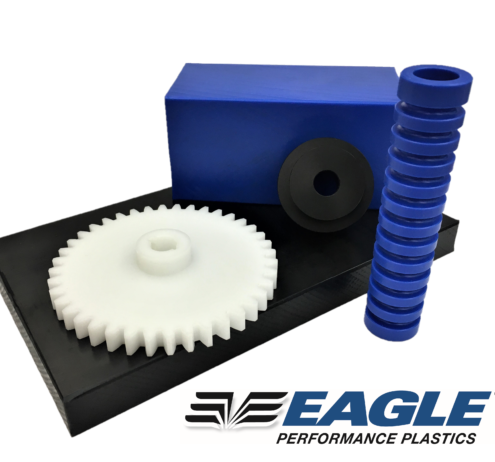PVDF Unfilled

PVDF Unfilled Overview
What is the Material: PVDF Unfilled is a semi-crystalline material.
Key Material Features: This material is beneficial in applications requiring high density, strength, chemical resistance, resistance to UV radiation, and low moisture absorption.
Other Considerations: It is used in the chemical processing industry. This material is stiffer and resists cold better than other fluorocarbon materials, such as PTFE (Teflon).
Physical
| Property | Value | Typical ASTM Test |
|---|---|---|
| Chemical Designation | (PVDF) Polyvinylidene Fluoride | |
| Trade Names (®, ™) | Kynar 740, Tecaflon, SustaPVDF, ZL 1700 | |
| Color | Natural | |
| Density (g/cm^3) | 1.78 | D 792 |
Mechanical
| Property | Value | Typical ASTM Test |
|---|---|---|
| Modulus of Elasticity (Tensile Test) (psi) | 300000 | D 638 |
| Tensile Strength at Yield (psi) | 8000 | D 638 |
| Tensile Strength at Break (psi) | 8000 | D 638 |
| Elongation at Break (%) | 35 | D 638 |
| Flexural Strength (psi) | 13000 | D 790 |
| Modulus of Elasticity (Flexural Test) (psi) | 400000 | D 790 |
| Compression Strength: 10% Strain (psi) | 10500 | D 695 |
| Compression Strength: 1% Strain (psi) | 1200 | D 695 |
| Compression Modulus (psi) | 160000 | D 695 |
| Impact Strength (Izod) (ft-lbs/in) | 1.9 | D 256 |
| Hardness (M) | 79 | D 785 |
| Coefficient of Friction (Kinetic, 40 psi, 50 fpm) | 0.58 | D 3702 |
Thermal
| Property | Value | Typical ASTM Test |
|---|---|---|
| Melting Point (°F) | 342 | D 3418 |
| Deflection Temperature (°F) (66 psi) | 271 | D 648 |
| Deflection Temperature (°F) (264 psi) | 230 | D 648 |
| Service Temperature Continuous (°F) | 300 | |
| Thermal Expansion (CLTE) (in/in/°F) | 7.30E-5 | D 696 |
| Thermal Conductivity (BTU-in/hr-ft^2-°F) | 1.25 | |
| Specific Heat (BTU/lb-°F) | 0.32 |
Electrical
| Property | Value | Typical ASTM Test |
|---|---|---|
| Volume Resistivity (Ω*cm) | 2.00E14 | D 257 |
| Dielectric Strength (V/mil) | 1700 | D 149 |
| Dissipation Factor (60 Hz) | 0.11 | D 150 |
| Dissipation Factor (1MHz) | 0.05 | D 150 |
| Dielectric Constant (1MHz) | 8.5 | D 150 |
Other
| Property | Value | Typical ASTM Test |
|---|---|---|
| Moisture Absorption (%) (24 Hours) | 0.02 | D 570 |
| Moisture Absorption (%) (Saturated) | 0.03 | D 570 |
| Flammability | V-0 |
The data stated are typical values intended for reference and comparison purposes only. The data should not be used as a basis for design specifications or quality control. The information is provided as a guide to the best of our knowledge and given without obligation or liability. Testing under individual application circumstances is recommended.
